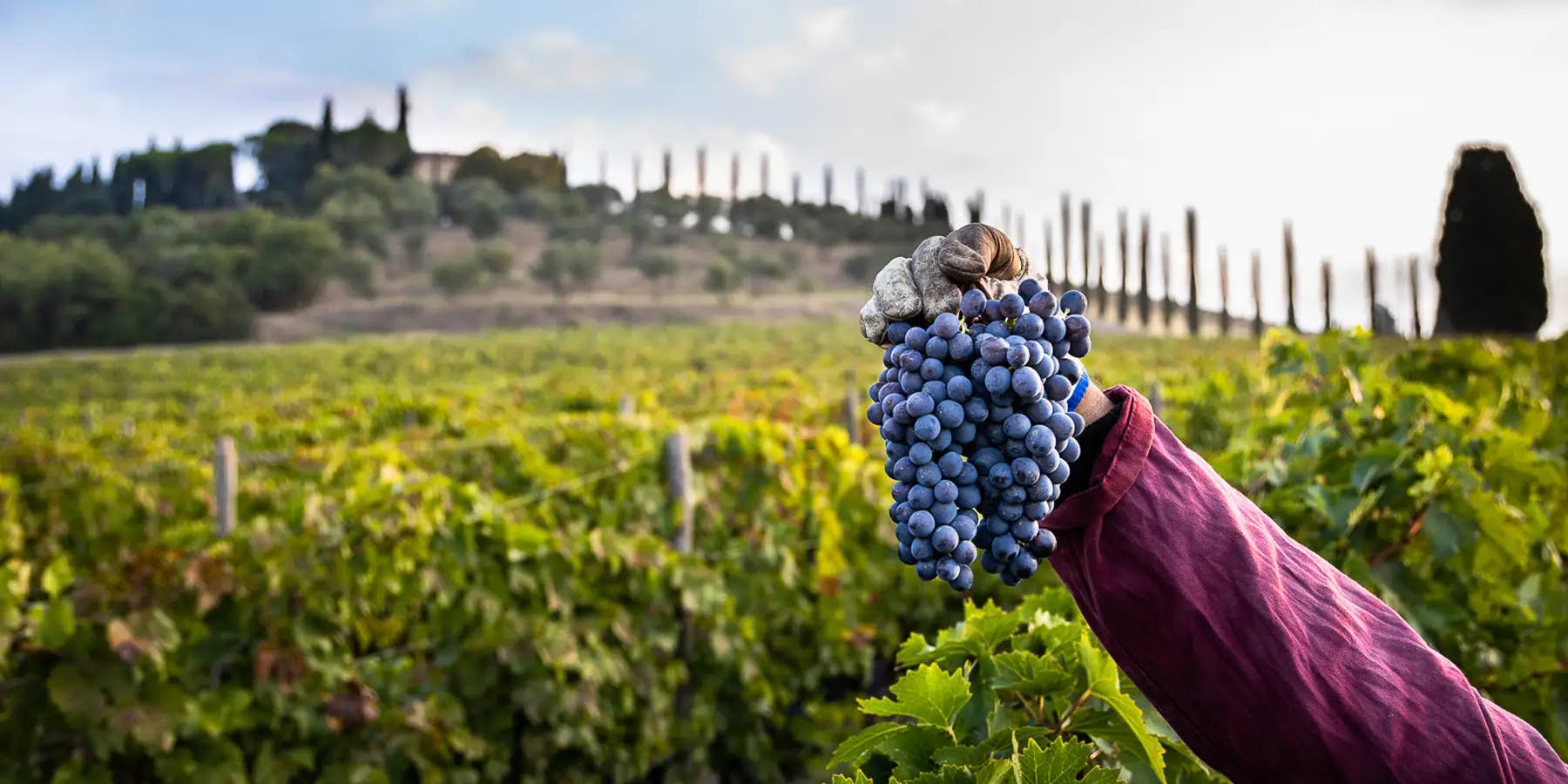- Wine world
Sangiovese: Tuscany's must-know red grape variety
- Tue, Aug 13, 2024 at 18:00

The origins of the Sangiovese grape
Sangiovese is an emblematic red grape variety of Italy, often considered the soul of Italian wine. Its name derives from the Latin Sanguis Jovis, meaning “Jupiter's blood”, which testifies to its historical and symbolic importance. Although its exact origins are uncertain, evidence suggests that it has been cultivated in Italy since Etruscan times, over 2,000 years ago. The variety is deeply rooted in Tuscan wine culture, where it plays a central role in the production of some of the world's most renowned wines.
Characteristics of the Sangiovese grape variety
Sangiovese is characterized by a wide range of variations, making it particularly adaptable to different wine-growing regions. It produces medium-sized, thick-skinned grapes, giving wines that are both tannic and acidic, with a remarkable capacity for ageing. Sangiovese wines are generally ruby-colored, with complex aromas of cherry, plum, violet and sometimes earthy, herbaceous or spicy notes.
Taste-wise, Sangiovese is characterized by lively acidity, firm tannins and a balanced structure, making it an excellent food companion. Variations in climate, soil and winemaking method strongly influence the profile of the wine, enabling the production of a range from young, fresh and fruity wines to robust and structured wines for aging.
In which regions can you find the Sangiovese grape variety?
The Sangiovese grape variety is primarily grown in Tuscany, Italy, where it is used to produce wines such as Chianti Classico, Brunello di Montalcino, and Vino Nobile di Montepulciano.
The Chianti region is known for producing complex, richly flavored red wines with notes of cherry, spice, and leather. 3 appellations in Chianti:
- DOCG Chianti covers a large area at the foot of the Apennines and produces wines of varying quality. Many are simple, inexpensive, and ready to drink young.
- DOCG Chianti Classico is higher in altitude, so the Sangiovese matures slowly there.
- DOCG Chianti Riserva has stricter requirements for aging.
Brunello di Montalcino is a premium wine made from Sangiovese that has been aged in oak for several years to produce a complex wine with notes of black cherry, leather, and spice. These wines have very good aging potential. Brunello is the local name for Sangiovese.
Outside of Tuscany, Sangiovese is also grown in other wine regions of Italy, as well as in California and Argentina.
Sangiovese Food and Grape Pairings
Sangiovese wines are particularly versatile at the table, thanks to their natural acidity and well-present tannins. They pair ideally with a wide range of dishes, such as:
- Pasta with Tomato Sauce: The acidity of the Sangiovese wine perfectly complements the acidity of the tomato, creating a harmonious pairing.
- Grilled or Roasted Meats: The tannins of Sangiovese pair well with red meats, whether beef, lamb or pork.
- Cured Meats and Aged Cheeses: A young, fresh Chianti pairs well with the salty, fatty flavors of cured meats, while a more mature Brunello di Montalcino can enhance aged cheeses.
- Mushroom Dishes: The earthy notes of Sangiovese resonate with the umami flavors of mushrooms, creating a rich and savory combination.
